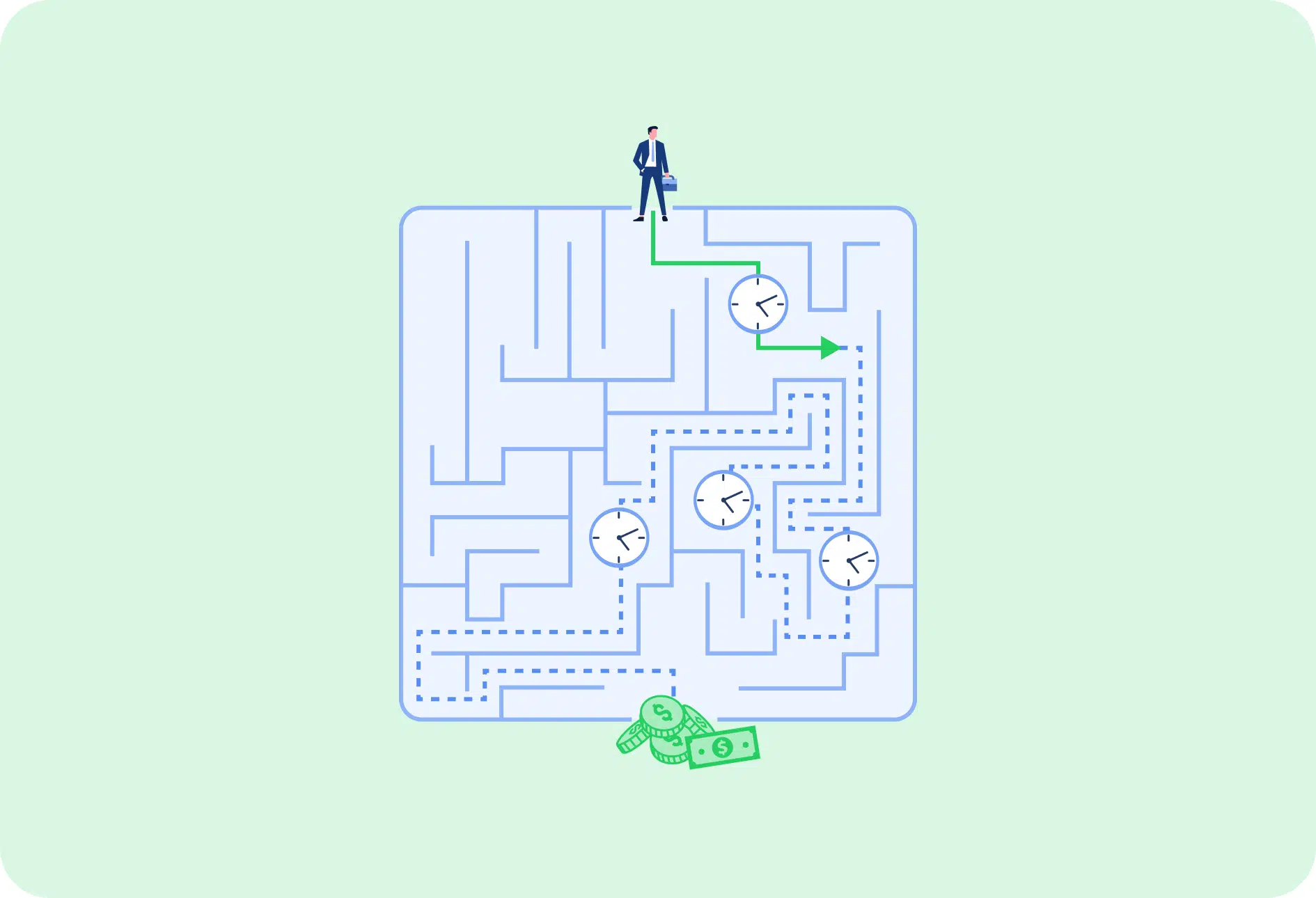The Complete Guide to Project Milestones Tracking (with examples)
-
Lorea Lastiri
- August 12, 2022
- 9 min read

The stats of project failure is alarming, as about 70% of projects fail. Project milestones are effective scheduling tools that can help project managers reduce project failure.
However, what exactly are project milestones and how can project managers implement project milestone tracking to deliver projects that meet time, cost, and quality expectations?
This article will answer these question, as it is a complete guide to project milestones tracking.
What are project milestones?
A milestone is literally an important or significant event in the history or development of something. Thus, a project milestone is an important or significant event occurring during a project’s life cycle.
Project milestones could also note the completion of a project phase. The project milestone (significant event or completed phase) could be at the start, during, or end of the project.
Project milestones are markers that help you know if you project is on course. Just as mile markers on highways help drivers know where they are and how far they have to go, project milestone help project managers know how a project is progressing.
Thus, project milestones are effective scheduling tools. While tracking a large project may be overwhelming, you can break it down into smaller phases, and set the achievement of each phase as a milestone.
 What’s the difference between milestones and tasks?
What’s the difference between milestones and tasks?
Project milestones mark specific points in a project’s timeline, while tasks are the activities that you need to complete to reach a designated point.
Tasks are activities in your project. They have start time and end time, so tasks take time to complete. However, milestones do not take time to complete, as they simply show a point in time when a group of task has been completed.
If milestones are like mile markers on a highway that shows you were you are, tasks are the miles that you have to cover to reach your destination.
Why are milestones important to project planning?
Milestones are scheduling tools used in project management to track the performance of key project areas. Milestones help project stakeholders to know if their project is on course. A time tracking app can easily help you establish and manage those milestones and make sure that everything is going as planned.
Thus, milestones help every project stakeholder, including the project team, project manager, and client (project owner).
How do milestones help the project team
The project team benefit from project milestones in the following way:
- Milestones help everyone to view progress
- They reminds the team of important project events
- They helps the team to judge priorities
- They motivate and align project team
👉 Read about best project time tracking tool!
Milestones help everyone to view progress
Since milestones mark specific points along a project timeline, they help the project team to know how the project is progressing.
As the team achieve particular milestone, everyone can appreciate how far they’ve come on the project, and what else needs to be done to completely achieve overall project goals.
Milestones remind the team of important project events
By definition, milestones are important events in a project life cycle. So, if you want to know the most important events in your project, you only need to look at the milestone chart.
Milestones usually mark the completion of deliverables. So, looking at the next milestone will remind the team of upcoming deadlines and what project activities need to be completed before then.
The project team can also use milestones to determine significant events like when supplies will be received from vendors, etc.
Milestones help the team to judge priorities
Very few people have the luxury of working on one project at a time, and even with one project, there could be many activities to handle at a time.
If you are attending to different project activities (in one or many projects) at a time, you may lose sight of the most important activities for your project at a particular point in time. However, if the team look at the project schedule and note upcoming milestones, they’ll know the most important activities to focus on.
Milestones help motivate and align project team
When your team use milestones to identify priorities, everyone will focus on the most important activities, thereby working towards the same objectives. Thus, milestones help align teams.
Also, as project milestones are achieved, teams members can see how the project is progressing along, and specifically how their efforts contribute to overall progress. This motivates your team as it tells them that their works towards the project is appreciated.
Milestone are strong motivating factors especially when achieving them is celebrated. You can celebrate achieving milestones in different ways, depending on your budget. It could be something as simple as sending your team a “thank you” note, or something bigger like having an office lunch or giving them a bonus.
How do milestones help project managers?
Project milestones help project managers in many ways, including:
- Milestone improves project delivery
- Milestone facilitate communication with project stakeholders
- They help project managers track project success
👉 Check also Best Free Tools for Project Manager!
Milestone improves project delivery
Milestones help you to break large projects into smaller phases that are easier to manage.
After breaking down the massive project and setting milestones, you can focus on completing the project phase by phase. That is, you can always focus on acheving the next milestone, and as you check off milestone achievements, you’ll move progressively through the project towards the final objectives.
Milestones facilitate communication with project stakeholders
The project managers can use milestones in a project time plan to communicate key points of a project to other stakeholders.
If a project schedule is reduced to a milestone chart, it’ll communicate key events like project start date, start and end date of different project phases, dates of key approvals, dates for receipt of supplies, etc.
Milestones help project managers track project success
In project management, milestones are important components in time plans for visualizing project progress. You can track the achievement of your milestones to know how far you’ve gone and how far you are from the project’s completion.
How do milestones help clients?
Milestones help clients in the following ways:
- Help clients visualize progress
- Help clients know if the project will satisfy their requirements
Help project clients visualize progress better
Project clients/ owners are usually less interested in the day-to-day activities of a project, and are more interested in the achievements of key deliverables.
Thus, milestones (especially mid project milestones that show key deliverables during the project life) are best for communicating project performance to clients.
Help clients know if the project will satisfy their requirements
Since, project milestones are markers that show the crucial points in a project life as it develops until it is completed, they allow clients to see whether the project capture and accurately implement their requirements.
 How to track project milestones?
How to track project milestones?
Setting and tracking project milestones is easy, following the following steps:
Step 1: Create a project goal
You need to develop a project plan with a definite goal like creating a new product or service. You need to set a timeline for the project.
Creating a project is easy with project resource management tools like Gantt Chart software.
Step 2: Structure your project into tasks and subtasks
Proceed to split the project into tasks and subtasks which are the different activities you will complete to achieve the project goals. Tasks and subtasks makes managing the project easier.
You can assign durations to each task, to determine the critical tasks and overall project duration.
Step 3: Define milestones
Adding milestones help you visualize your project’s progress. To assign milestones, you need to group tasks according to different project phases.
Step 4: Use a Gantt Chart to visualize milestones
A Gantt chart helps you to visualize your entire project timeline on one worksheet. The Gantt chart show you project schedule, project tasks and subtasks, task dependencies, allocated time for every tasks, and project milestones.
Project milestones examples
Whatever your field, you can use milestones in your project management tools to measure progress and know if you are on the right track to achieving desired project objectives. It doesn’t matter whether you are in the healthcare, engineering or construction fields.
The number of milestones you need will depend on your project scope and how you decide to breakdown and group project activities.
That said, some major project milestones examples are:
- Project approval
- Design approval
- Project plans approval
- Team hiring and training
- Resource acquisition
- Project deliverable
- Testing
- Key delivery dates
- Final approval
- Project end date
Project approval
Project approval is one of the key milestones in the early phases of a project.
Until a project is approved, you cannot begin working on it. So, the first milestone to kickstart your project is gaining approval from senior management.
Design approval
In the early project phases, you’ll need to come up with the project design, which includes what the project final outcome will look like, the processes and resources for achieving it, and the key deliverables along the way.
Another crucial milestone in any project is design approval. It is the point where the client signs off on outcome, processes, resources, and deliverables.
It is a crucial stage where you can get tons of valuable feedback. You may have to redo many aspect of the project design before the client signs off on it. However, achieving this milestone allows the project to move to planning phase.
Project plans approval
Whereas the project design is a broad overview, the project plan provides more detailed information. The project plans define the execution and control stages of the project, detailing schedules, budgets, etc.
The project plans approval milestone shows that the client is happy with projected project duration, costs, etc. Achieving key stakeholders approval allows the project to move to developmental stages.
Team hiring and training
If your project need some individuals for key roles, then successfully finding such persons and getting them ready for the job (via training) is an important point in the project’s timeline.
Resource acquisition
Every project will need certain equipment and material resources. This prompts market research to find suitable vendors, entering vendor contracts, taking delivery of material/ equipment, etc.
Thus, the receipt of essential resources can be marked off as a significant point in the project.
Project deliverables
You can create milestones of project and product deliverables. If you break projects down into smaller phases, deliverables are sub-results from each phase. A deliverable is a measurable and tangible outcome of a project phase. It could be a product, document, approval, result, or software.
Some deliverables examples include project plans, permits, progress reports, website content, key product parts, finished product, etc.
Testing
In many projects, testing is required after some development of certain phases to ensure quality and safety.
The required testing is a critical point of the project because the deliverable cannot proceed to the next phase if it does not pass the test.
Project end date
The project end date is one of the most important final stages milestones. It signifies the end of the project, when all project objectives have been achieved and the outcome has been fully developed.
Achieving the project completion milestone allows the project to move to the final approval stage.
Final approval
You have developed the project outcome and finished all inspections and testing. However, you cannot start popping the champagne (in celebration) until the project outcome is approved by the top stakeholders.
Thus, final approval, which is often the last milestone, is also a crucial moment in the project life.
Benefits of tracking project milestones
With a milestone being a crucial moment in a project, tracking project milestones has many benefits, including:
- Improve project delivery
- Identify potential bottlenecks
- Serve as checkpoints
- Identify essential dates
- Accountability
Improve project delivery
Project milestones improve project delivery. First, they help project managers delineate a large project into smaller phases for better management. Secondly, when there are multiple tasks, milestones help managers prioritize and focus on the most important tasks.
Identify potential bottlenecks
Bottlenecks are points of congestion in projects, where the workflow slows down. Mapping out your processes help you identify your bottlenecks.
Interestingly, tracking project milestones is one way to map out your processes as it helps you visualize key points in your project life cycle.
Serve as checkpoints
Project milestones serve as checkpoints that help you identify how you are progressing on your project. It tells you where you are on the project and how far you are from project completion.
Identify essential dates
Milestones in project management are basically essential dates in a project’s life, such as dates of approval, dates of key acquisitions, delivery dates, etc. Thus, tracing milestones will help you identify the key dates in a project.
Accountability
In project management, accountability is about ownership of outcomes. That is, taking responsibilty for achieving project outcomes and being transparent about results.
Since milestones show when particular tasks are to be completed, they help managers take responsibility and actively track deadlines in order to reach KPIs (key performance indicators).
💡What are Time Tracking KPIs? Check the article!
Conclusion
Project milestones are important points in a project’ life cycle, and tracking them will help you monitor progress, identify bottlenecks, determine priorities, visualize essential dates, motivate the project team, and more.
Popular examples of project milestones include project approval, design approval, critical resource acquisition, key deliverable dates, testing, project end date, and final approval.
You achieve milestones by completing particular tasks, and the best tool for tracking the time spent completing project tasks in TimeCamp.
-
With TimeCamp, you can easily create a project, structure it into tasks and subtasks, and track time for each tasks.
-
It integrates with all of the most popular work management tools for better performance
-
It supports enterprise time tracking, allowing you to track your time across different projects and organize work without problem.
Start tracking your performance, productivity, and profitability. Signup to TimeCamp today!



